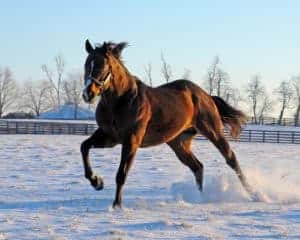Getting Equitation Science Research Into the Real World
- Topics: Article
As equitation science advances, researchers say they’re recognizing the increasing need to share their findings with the riding public. And one group of Scottish scientists believes a good way to reach horse owners is through their veterinarians.
“We want to bridge the gap between the fantastic knowledge that comes out of these (scientific) conferences and the real world,” said Gemma Pearson, BVMS, MRCVS, of the University of Edinburgh. Pearson and Bryony Waggett, HND, BSc(Hons), MSc, of the University of Edinburgh, represented their research at the 2014 International Society for Equitation Science conference, held Aug. 6-9 in Bredsten, Denmark.
Working with Natalie Waran, PhD, also of the University of Edinburgh, Pearson and Waggett have been proactively integrating equitation science into the veterinary classrooms and hospital of the Royal (Dick) School of Veterinary Studies in Edinburgh, Scotland. Over the past three and a half years, the team has developed lectures and hands-on training programs for the students, professors, and even clinic grooms. Their work has reached at least 600 students so far, they said.
Two years ago, Pearson demonstrated the benefits of learning theory—a critical aspect of equitation science—to the safety of both horse and handler in a clinic setting. Encouraged by the results, the group has continued to ensure that the research coming out of the equitation science field filters into the university’s training and practice programs
Create a free account with TheHorse.com to view this content.
TheHorse.com is home to thousands of free articles about horse health care. In order to access some of our exclusive free content, you must be signed into TheHorse.com.
Start your free account today!
Already have an account?
and continue reading.

Related Articles
Stay on top of the most recent Horse Health news with

















